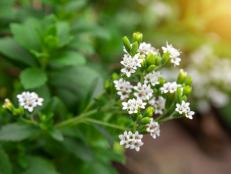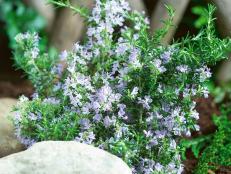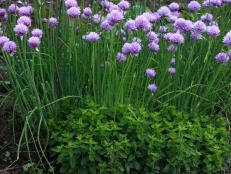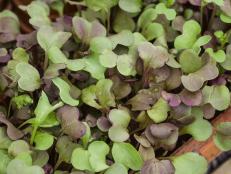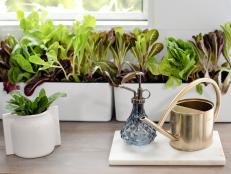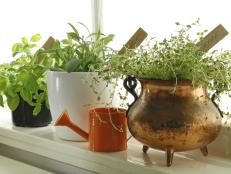Start a Mason Jar Herb Garden


Photo by Mick Telkamp
Throughout the summer, the planter boxes on my deck are loaded with herbs. I used to keep a wide variety because, well, they’re easy to grow and don’t take up much space. Eventually, I realized that growing cilantro doesn’t make much sense, since I can’t stand the stuff, and one variety of mint is probably plenty. Dill, on the other hand, is an important part of summer pickling, I’ll use parsley in just about anything and no matter now much basil I grow, it won’t be enough. Rounded out with rosemary, chives and a few others, my deck rail herb garden has become a crucial part of my summer gardening. But what happens when summer turns to fall? We move the operation indoors.
Growing herbs indoors is an easy choice when using fresh herbs are part of your kitchen routine. In past years, there has always been a bit of a scramble to find enough small containers to transplant the many herbs growing on the back porch. That wasn’t a problem this year as we embrace the ease, style and convenience of mason jar gardening.
Mason jars are readily available, inexpensive and have an innate rustic style that endures. Using Mason jars (or other recycled jars) for growing herbs is a no-muss, no-fuss solution when transplanting herbs or starting from scratch. Follow the steps below to manage drainage, growing medium, sunlight requirements and will add a bit of flair to our favorite indoor plants.
Materials
- Quart Mason jars
- Small rocks or gravel
- Potting mix
- Herb plants or seeds
- Jar labels
Step One: Place Rocks in Jars
Because the jars do not have holes for drainage, starting with a layer of rocks, gravel or even marbles about 2 inches deep in the bottom of jars will prevent roots from damage from excess water.
Step Two: Add Potting Soil
Unlike soil, potting mix is a planting medium that includes lighter organic material like peat, composts and sometimes perlite. Potting mix (not to be confused with potting soil) provides excellent moisture retention and is a good choice for container gardening. Fill jars with potting mix to 1-2 inches below the jar rim.
Step Three: Transplant Herbs or Plant Seeds
While a Mason jar herb garden is an easy way to transplant herbs from outdoor planter boxes for kitchen-friendly gardening, Mason jars are also a cheap and convenient way to plant herbs indoors. Follow instructions provided by seed provider for best results, but in most cases, simply sow seeds on top of potting mix, cover with an inch or so of additional potting mix and lightly water.
When transplanting herbs to Mason jars, gently pull roots apart to encourage growth, plant in jar and pack mix firmly around the roots and base of plant (top off jar). For plants with more established roots, it may be necessary to remove a little potting mix from the jar before planting. Keep roots exposed to the air for as little time as possible and water plants as soon as they are re-planted.
Step Four: Label Jars
Herbs can be labeled using a craft stick placed in the dirt, an identification card attached to the neck of the jar or a sticker affixed to the jar itself. In most cases, your Mason jar garden will remain in plain sight, so a pretty label goes a long way toward adding a bit of flair to these functional containers.
Step Five: Maintenance
Your Mason jar garden is terrifically portable. Place jars in a location that receives at least 6 hours of sunshine a day (windowsill, countertop, etc), but enjoy the ease with which they can be moved around. Keep herbs watered, but do not overwater. Harvest your kitchen crops as needed to add flavor to whatever is on the menu.






